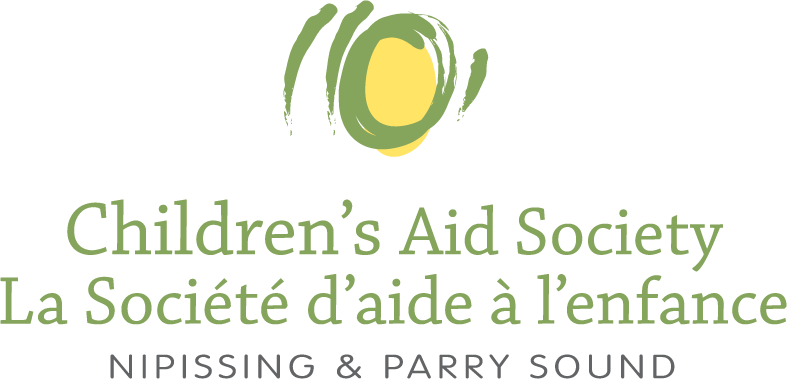Supervised Access
Supervised Access is arranged by the Agency when a child is living away from their parents, and provides a safe, child-focused, neutral setting where visits can take place under the supervision of an Access Worker. Access Workers provide assistance to parents and children by: assessing how the family functions together, setting goals with the family, identifying grief & attachment reactions, and role model strategies.
Access Workers assist the families with improving:
- Parenting skills
- Childcare skills
- Behaviour management skills
- Communication/emotional expression skills.
During the visit, families spend time together performing regular “family tasks.” They learn developmental play/growth, have meals/snacks, communicate, work on homework, problem solve, and manage conflicts.
There are two forms of Supervised Access:
Monitored Supervised Access
Monitored Access recognizes that some families may have significant factors that complicate their ability to engage in goal setting and change, as a result of serious mental health concerns or instability due to serious addiction issues. On-going efforts are made to encourage active involvement in visits, while ensuring that the visits are safe and beneficial to the child.
Clinically Managed Supervised Access
Clinically Managed Supervised Access (CMSA) is the therapeutic access process, in which families are provided with the opportunity to receive structured, goal-focused access. The issues, which bring the family into the Society, are addressed through several methods and goals are set for each visit. Focus on improving the attachment relationship between child and parent is of primary importance in the process within CMSA.

Family Group Decision Making
Families involved with the Society are eligible to participate in Family Group Decision Making (FGDM), which is a form of Alternative Dispute Resolution. This alternative to court processes allows the family, extended family and friends to come together to make a plan for the child. The plan addresses the concerns of the Society and can also be utilized when there is no court involvement. This voluntary process empowers the family to create a plan of their own to address the needs of their children and can be used at any time.
The FGDM model is based on the premise that families want to plan for their children and want to ensure that the children’s needs are met. FGDM also believes that every family has unique abilities and strengths, and it is these positive qualities that families can build on when planning for their children’s well being.
The Society worker or the family themselves can refer to the program by contacting the Coordinator. FGDM is appropriate for when:
- Shortly after referral,
- Time is running out for a child in care,
- The family is awaiting a trial, or
- When families have been involved with the Agency for a lengthy period.
It is also appropriate to refer when a variation is needed to an openness order for adoption, a plan for a child who is returning home, or in pre-birth planning.
What is Family Group Decision Making (FGDM)?
A Family Group Decision Making (FDGM) is a process which joins you with relatives and friends, to develop a plan to ensure that your child(ren) are cared for.
Why Use FDGM?
- It includes everyone who is important to your child.
- You are able to author your own plan.
- In ensures safety of all participants.
- It allows you to help create solutions for your own situation.
- It encourages you to focus on your strengths.
- You can hear concerns from others.
- It is unique to your situation and culture.

How is the Meeting Arranged?
- After your worker has discussed FGDM with you, the coordinator will contact you to explain what it is all about. She/he will ask you who is in your family and how they can be contacted. The coordinator will also ask whether there are other people who feel like part of the family, who should be included.
- The coordinator will approach these people and invite them to the meeting.
- The coordinator will prepare each person for the meeting.
- The coordinator will ask you which service providers should attend the meeting
- Child care and refreshments are provided. Travel arrangements can be made.
- After your worker has discussed FGDM with you, the coordinator will contact you to explain what it is all about. She/he will ask you who is in your family and how they can be contacted. The coordinator will also ask whether there are other people who feel like part of the family, who should be included.
- The coordinator will approach these people and invite them to the meeting.
- The coordinator will prepare each person for the meeting.
- The coordinator will ask you which service providers should attend the meeting
- Child care and refreshments are provided. Travel arrangements can be made.
How Long Does it Take?
- It takes a few weeks to setup the meeting and to make sure everyone is prepared and included.
- The meeting will go on for as long as necessary until a plan is agreed upon – so set aside the whole day!
What Happens in a Family Group Meeting?
Part 1 – Welcome & Information Sharing
- The coordinator greets and welcomes everyone.
- There is an opening that fits with the family’s traditions.
- The coordinator outlines the purpose of the meeting.
- Each person introduces him or herself and shares a hope for the day.
- Guidelines for a respectful discussion are established.
- If needed, a safety plan is outlined.
- The service providers share information about the family.
- The family asks the service providers questions.
Part 2 – Private Family Time
- The family has an indefinite amount of time together without professionals present in the room to consider new ways of helping the children and the family to arrive at a plan.
Part 3 – Presentation of the plan
- The plan is presented to the coordinator and the family’s child welfare worker.
- The details of implementing the plan are discussed and agreed upon.
- A second FGDM meeting is an available option…
A copy of the plan will be sent to the family within 10 days of the meeting.
